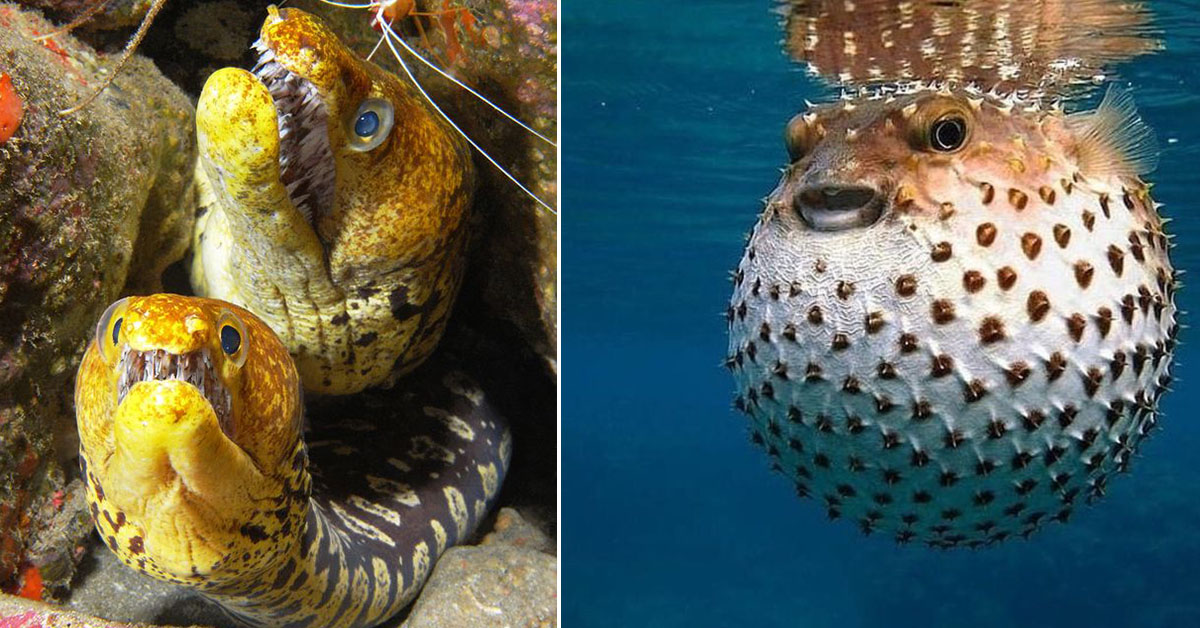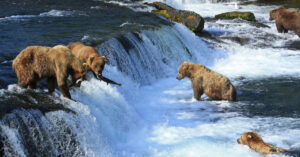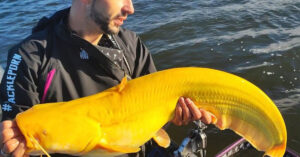Fish are mostly one of two types, based on what kind of water they live in. That is, fish from salt water and fish from fresh water. Over 30,000 different species live in the world’s oceans and freshwater lakes and rivers.
But some species have parts that are darker and more dangerous. Below, we’ll learn about these dangerous fish that live in salty or ocean water.
1. The Puffers
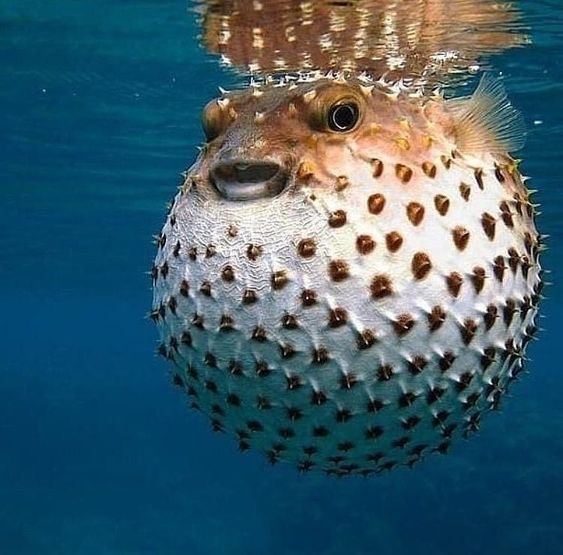
A type of fish that looks the cutest. The puffer is one of about 90 species of fish in the Tetraodontidae family. It is also called a Swellfish or a Blowfish. Puffers live in warm and temperate parts of the world, mostly in the sea but sometimes in saltwater as well. Because they can fill up with a lot of air and water, they become circular when they sense something dangerous. They have hard, rough skin and teeth that are joined together. In the middle of each mouth, they look like a two-pronged beak. Most puffers are small and cute, but the biggest ones can grow to be about 90 cm (3 ft) long. But most of the time they are much smaller.
There are a lot of deadly species. Tetradontoxin, which is very dangerous, is mostly found in the organs. The poison is so bad that it can even kill. But sometimes puffer fish are eaten. In Japan, this fish is called Fugu, and a chef with special training is needed to cook it.
02. The Lion Fish

Red Lionfish live in reef settings in the South Pacific. At the beginning of the 21st century, the species was common in reef habitats along the east coast of the United States, in the Gulf of Mexico, and in the Caribbean Sea.
They are known for having poisonous spines on their fins. These fish don’t usually kill people but can cause puncture cuts. They have longer spines on their dorsal fins and bigger pectoral fins. Has a unique pattern of stripes like a zebra’s.
When it is scared, it spreads out its fins and if it is scared even more, it will strike with its spines on its back. It can grow up to 30 cm (12 in) long and has red, brown, and white lines. Has a high rate of reproduction. Because it didn’t have any natural enemies in the area, it killed all of the reef fish that were already there. It was then called an invading species.
03. Cadiru

The Candiru (Vandelia cirrhosa) is a parasite catfish living in the Amazon River without scales. It is a member of the Trichomycteridae family. These fish are clear and look like eels. The arm grows about 2.5 cm (1 inch) long. They need blood to live. They are, in fact, a very dangerous type of fish. Because they sometimes attack people and can even get into the urine tracts of animals that are bathing or swimming. Also, after going through the passage, the person can get an infection, bleed, or even die.
04. The Great White
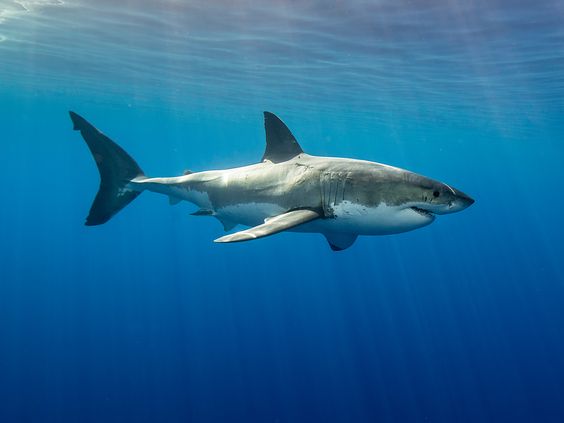
The white shark (Carcharodon carcharias), which is also called the great white shark or white pointer. Doesn’t really need much of a start. It is known to be one of the strongest and most dangerous sharks that hunt.
Great white sharks attack swimmers, divers, surfers, and small boats for no reason, and sometimes kill them. But this great white shark usually only takes one bite at its human meal before running away. It doesn’t usually come back for another bite.
If the person gets bitten normally, he or she might have time to act right away and get help. But big bites can cause serious damage to tissues and organs that can be fatal.
Researchers say that sharks mostly bite people because they are curious about them. But some experts say that it happens because the shark thinks that people are seals or sea lions, which are its natural food.
Moray Eel

Moray eels can be found in all tropical and subtropical seas. There are more than 80 different kinds. Lives between reefs and rocks in shallow water and hides in holes. Moray eels are different from other eels because their gill holes are small and round, and they often don’t have pectoral fins.
The skin is thick, smooth, and scaly, and the mouth is wide. Their jaws have strong, sharp teeth that help them catch their prey (mostly other fish) and hurt their enemies, including people, very badly. But these fish usually only attack when they are scared. But the second can be very bad.
These moray eels are usually brightly coloured and can grow up to 1.5 metres (5 feet) long. But only one species, Thysoidea macrus, gets to about 3.5 metres (11.5 feet) in the Pacific.
They are also eaten in some parts of the world. But sometimes their meat is poisonous and can make you sick or kill you.
06. Tigre de mer
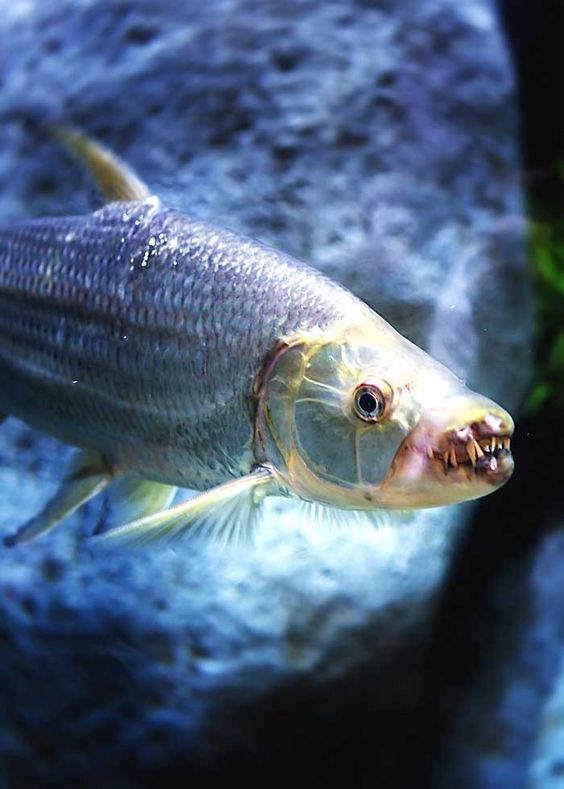
They can be over 1.8 metres (6 ft) long and weigh more than 57 kg (125 lb) on average. There are five kinds of Tigerfish (Hydrocyanus) right now. Tiger fish got their name from how smart they are, how fierce they used to be, or how they look when they are caught.
Depending on the species, they have one or more dark, long lines, and when their mouths are closed, their teeth stick out like swords. Most animals that eat meat look like salmon.
Tigerfish of the genus Hydrocynus (or sometimes Hydrocyon) are game fish in African waters. They are in the family Characidae, which is in the order Cypriniformes. Its gill covers have sharp spines that can hurt someone who isn’t careful.
07. The Piranha
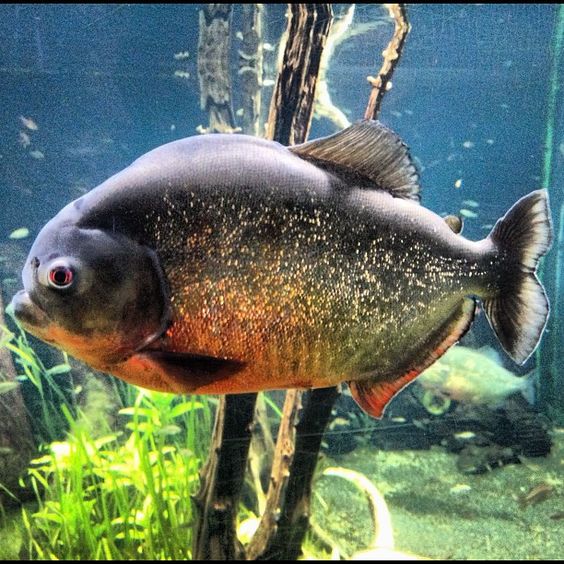
Piranha fish are also called Caribe and Piraya, and most kinds don’t get any bigger than 60 cm (about 2 feet) long. Most of the time, they are silver with an orange underside, but sometimes they are almost totally black. They live from the north of Argentina to the south of Colombia. But in the Amazon River, where there are 20 different kinds, they are more different.
The red-bellied Piranha (Pygocentrus natareri) is the most well-known because it has the largest jaws and sharpest teeth. At low water, this species can grow to about 50 cm (20 inches) long and hunts in groups of more than 100.
Red-bellied piranhas like to eat things that are a little bigger or smaller than them. Most of the time, groups of red-bellied piranhas spread out to look for food. When the attacking scout is in place, he or she lets the others know. More than 60 kinds of fish with sharp teeth that eat meat live in the rivers and lakes of South America. Most animals and birds eat dirt or plant matter.
These common fish have deep bodies, bellies with saw-like edges, and big, strong jaws with sharp, triangular teeth that come together in a scissor-like bite.
This is usually done by sound, since piranhas have very good hearing. But most types of piranhas don’t kill big animals, and piranhas rarely bite people.
08. The Stone Fish

Stonefish are toxic fish that belong to the genus Synanceja and the family Synancejidae. Most of the time, they live in shallow seas in the tropical Indo-Pacific area. They live in mudflats, coral reefs, and rivers. Slow fish that live at the bottom.
These fish stay still on the bottom. They have a big head, thick skin with a mouth, small eyes, and bumps that look like warts. Both in shape and colour, they fit in perfectly with their surroundings.
This Stonefish is hard to see and is a dangerous type of fish. When they get angry, they can inject poison through holes in the spines of their dorsal fins. These fish can cause very painful and sometimes deadly wounds.
09. The Atlantic Manta
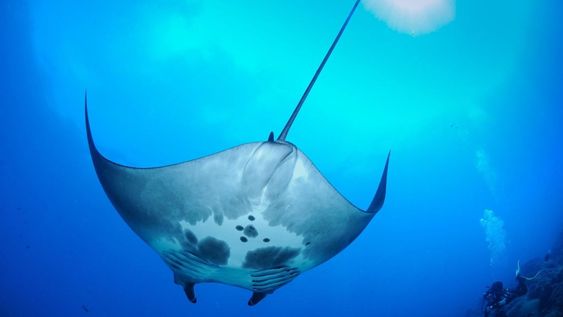
The Mobulidae family includes several types of sea rays that are also called manta rays or devil rays. The body is usually bigger than it is long, and the pectoral fins are big and fleshy, making them look like the wings of a manta ray. These fins look like the horns of demons and stick out from the front of the head. These are called cephalic fins. Manta rays also have short tails that look like whips. Some species have one or more spines that can hurt you.
Eats tiny fish and plankton. The Mobula diabolis from Australia is the smallest of these fish. They are no taller than 60 cm (two feet). The largest species in this group is the Atlantic manta, also called the giant devil ray (Manta birostris). They tend to grow to be 7 m (23 ft) tall. They are a well-known species that can be brown or black and are very strong but not dangerous.
10.Eel that lights up
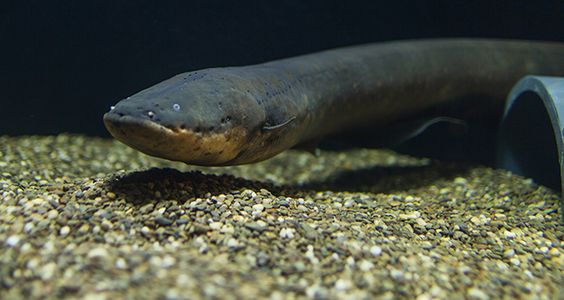
South America is home to these fish with long bodies. Most of the time, it gives other fish a strong electric shock to stop them.
Electric eels can get as long as 2.75 metres (9 feet) and weigh as much as 22 kg (48.5 lb). It has a long, cylindrical body that is scaly and usually greyish brown (sometimes with a red bottom) with pale skin. About four-fifths of their total length is made up of their tails, which have a wavy anal fin that helps them move.
The electric eel is one of the most dangerous animals in the water of Varsia, the whitewashed forest. Thought to be a slow animal that likes slow-moving waters. Every few minutes, they come to the top just to breathe. The electric eel’s mouth has a lot of blood vessels, which lets it breathe through its mouth.
The electric eel can shock its food in a very cool way. But it may have changed to protect its teeth from being hurt by fish that move around and often have sharp barbs. The shocked person is stunned for a long time and puts his or her mouth right into the stomach. Eels can use their electrical discharges to stop prey from running away or to make hiding prey wriggle.
There are electrical organs in the tail that send out between 300 and 650 volts. It’s a strong enough charge to even scare people. The electric eel can also use these organs to find its way and talk to other electric eels.
